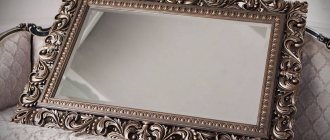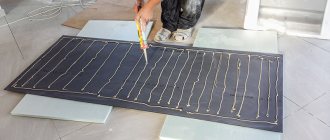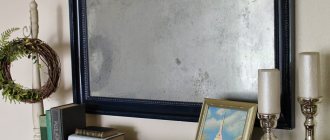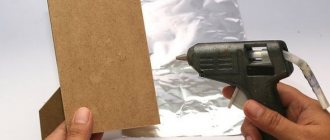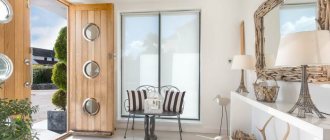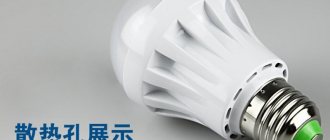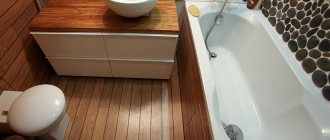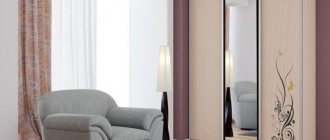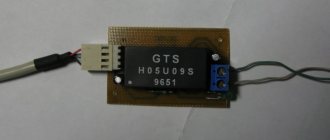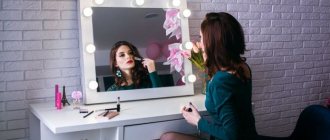Mirror spy (Gisella).
This product is made of a special type of glass that allows light to pass through only one direction and not the other.
These glasses are often used by architects when constructing new building structures. The mirror can be fixed in a niche, and it can be framed on both sides. M1 brand glass is of the highest quality. At the same time, the spraying density, as well as the color, can be changed in accordance with the client’s wishes.
After installing the spy mirror, it is very important to install the correct lighting on both sides of the mirror. If the room is light, then the gisella mirror will be perceived as an ordinary reflective mirror sheet. To an observer who is in a darker room, the mirror will be transparent like a window.
The principle of operation of the mirror is presented in this video:
Maximum mirror size 2500 x 1600 mm
The lighting ratio in the room should be at least 3:1
By applying a thin titanium-based layer to the surface of the mirror, the surface acquires reflective properties. In this case, you will see everything that is happening behind the glass, but no one will see you.
*Note A mirror-tunnel with an infinity effect is made from a mirror with 5% translucency.
Double-glazed windows from glass of the “Spy” series
| Type | Formula | Thickness (mm) | Cost per m2 |
| Single chamber | 4+16+4 | 14-36 | 3500 |
| Double chamber | 4+(6..10)+4+(6..10)+4 | 24-32 | 4500 |
| Double chamber+ | 4+(12..16)+4+(12..16)+4 | 34-44 | 5500 |
We also deliver products to the regions by transport companies.
A transparent mirror is often used for observation rooms, teleprompters, making a “mirror in a TV”; it is a very fashionable and now popular feature in the interior:
The idea of using one-way mirror technology for interior decoration has been known and interesting to designers for a long time. Architects use such mirrors in the construction of new buildings.
Materials
▍Glass (mirror)
I used the Pilkington Mirrorpane. It turned out to be the most expensive part of the project (200 Canadian dollars). While reading various materials on the topic of smart mirrors, I learned that people achieved a good effect using a film, transparent on one side, on acrylic glass. A local company cut me a suitable piece of 6mm Pilkington Mirrorpane. In the right lighting it does its job perfectly. If the lighting is too bright, then the picture from the monitor, which is located behind the mirror, is less visible. The manufacturer recommends a ratio of 8:1 between the illumination of the rear and front of the mirror. Under such conditions the mirror should give good results. In addition, this mirror has an amber tint. It looks nice, but when choosing such a mirror you need to take into account that you cannot change its color.
Manufacturing of translucent titanium coating.
The principle of operation of the titanium coating of the spy mirror:
| 1 room | Effect | 2 room |
| Light | Dark | |
| Dark | Transparent Reflection | Light |
| Light | Reflection 95% Reflection 95% | Light |
The tinted mirror with spy coating has a one-way visibility effect, i.e. you will be able to observe others, but at the same time you yourself will remain invisible.
Architects and designers use mirror glass for exterior decoration and decorative interior decoration of premises and office buildings. It is also used in the manufacture of mobile partitions and cabinet furniture. As a rule, mirror glass is used for reflection from the side of glass without a coating. This effect is achieved through the use of a special composition, which forms a strong specularity on one side and quite low on the other.
Particularly popular are coated colored mirror glasses. They are used in the decoration of restaurants, entertainment venues, and shopping centers. They gained their popularity due to the fact that they have the ability to visually increase volume and are able to add attractiveness and originality to the interior. The category of “special glasses” includes glasses for special applications.
The coating of these mirrors is obtained by titanium sputtering of varying intensity, or by gluing a special tinted film to the back of the glass. To produce such mirrors, glass of any thickness can be used. The spraying composition includes fine titanium powder, which has high resistance to environmental influences without significant changes in properties.
Comparison of the transparency of spy and gesella with a light ratio of 1 to 1
® All rights reserved. Full or partial copying of site materials is possible only with the written consent of the copyright holder.
Source
Properties of glass
Such half-mirror cameras really exist and are used for secretly monitoring people (for the purpose of monitoring behavior or espionage), or to protect a room from prying eyes.
According to Fresnel's optical laws
, reflection coefficients depend only on the optical properties of the medium (refractive index
n
) and on the angle of incidence of the beam.
Since there is air on both sides of the glass under conditions suitable for human life (and its optical properties depend only on humidity, temperature and pressure and change very little), the glass will have the same properties (refractive indices n
, reflection
R
, transmittance
T
, absorption
K
) both for light rays coming from the “hidden” space and into it.
Solution and physical processes
The principle of operation of mirror glass is that the darkened interior
not visible against the background
of a bright reflection
.
Mathematical solution
Then I
x
T
of the light flux from the outside and
i
x
R
of the reflected image.
The luminous flux outward also consists of two: i
x
T
(image of the room) and
I
x
R
(own street reflection).
The requirements we need turn into simple mathematical equations:
At the same time, in order to prevent the interior of the room from being visible from the street, the reflection coefficient R
should be several times greater than the transmittance (we must not forget that they are related to each other:
R
+
T
≤ 1).
Attitude I
/
i
in the formulas shows how many times the illumination outside is greater than the illumination inside. The brighter the outside and the darker the inside, the better our requirements are met.
Characteristic illumination for various conditions:
| Conditions | Illumination, lux |
| Sun rays at noon | 100 000 |
| In an open place on a cloudy day | 1 000 |
| In a bright room near a window | 100 |
| In a room with artificial light | 50-100 |
| From the full moon | 0,2 |
| From the night sky to a moonless night | 0,0003 |
During the daytime the ratio I
/
i
takes the value 100÷1000 depending on the weather clarity. At night the ratio is less than 0.1.
Therefore, the viewer indoors will clearly see the street
until the difference in illumination
I
/
i
becomes less than 10÷100. Those. some time after sunset the street will not be visible very well. At night, spectators indoors will not see anything.
For the same to be hidden
from the eyes of observers on the street, it is necessary that the difference in illumination
I
/
i
be at least 2. Therefore, it will be possible to see the room from the outside late at dusk, when it is only a little lighter outside than inside.
In order to avoid this, it is necessary to increase the illumination outside by at least 2 times compared to the room. This means that in front of the glass with one-way transparency it may be necessary to install lamps that will create brighter lighting at night than indoors.
Characteristic
The mirror has its own manufacturing technique, which must be followed to obtain the result.:
- The thickness of sheet glass ranges from 4 mm to 20 mm. This item varies among different manufacturers.
- Light transmission 5%, 10%, 15%, 20%. Higher transmission has the effect of making the product less mirror-like as reflection is reduced. The lower the percentage of light transmission, the darker the glass itself.
The spy mirror has a lower percentage of light transmission and is used in live surveillance rooms and mirror tunnels. Whereas the Gisella mirror has a higher percentage of light transmission and is used to create monitors and CCTV cameras.
- The mirror size can vary up to 1605*2850.
- Also, depending on the manufacturer, mirrors have different colors (gold, bronze, steel).
One way mirror production
How does such a one-way mirror differ from a regular one and how to make it?
The cost of both methods is the same, and the principle of operation is the same (see above). Resistance to mechanical stress (scratches, shocks), temperature conditions and humidity is approximately the same.
Mirror film
can be applied locally, incl. on existing glazing. However, applying the film requires good skills and special tools to avoid defects during gluing (bubbles, peeling, various irregularities, foreign inclusions or dust, etc.). Also, the mirror film can be applied together with a reinforcing protective film.
Algorithm for creating an infinity mirror, from choosing materials to assembly
LED strips have allowed designers to implement many original interior solutions. With their help, you can beautifully illuminate furniture and create a real art object. One of the most unusual options for lighting design of a room is the so-called infinity mirror - a light tunnel that fascinates at first sight. Such a decorative item will not leave anyone indifferent, and you can even make it yourself.
What is
An infinity mirror creates the magical illusion of endless depth, despite the fact that its design is actually completely flat. Looking into it, it seems that it is a well that has no bottom or is located at a great distance. In fact, the thickness of the mirror is only a few centimeters. This effect is achieved thanks to small LEDs that illuminate the mirror surface: closer to the center they become smaller and do not shine so brightly, due to which an optical illusion occurs. A person gets the impression that the tunnel is slightly narrowing, and its bottom is in pitch darkness.
It is not difficult to explain this optical effect theoretically. You can even create an illusory endless tunnel with the help of an ordinary candle: this magic was used by many girls of almost all generations, conducting Christmas rituals of fortune-telling. Due to the multiple reflection of the light source from the real and imaginary surfaces of the mirror, it seemed as if the candle was falling into a tunnel without end or edge. All this can be easily explained in terms of quantum physics.
Automatically turn the mirror on and off based on a signal from a motion sensor
There was one extremely important item on my list of smart mirror features: the mirror should turn off when no one is nearby. The MMM-PIR-Sensor module copes with this task perfectly. Especially if the display used in the project supports all HDMI CEC commands. The TV behind my mirror, for unknown reasons, only supports a command related to the state of the device. As a result, I solved the problem of turning the TV on and off using the Raspberry Pi GPIO (PIN 15) by manipulating the TV's power button so that the device thinks that a person is pressing it.
TV control panel
After that everything worked the way I wanted.
Source
How to make it yourself
It is not possible to order an LED art object everywhere, but this is not necessary, because making a mirror with an infinity effect with your own hands is not so difficult. All you need is to purchase materials, build a frame and assemble the structure according to ready-made instructions and diagrams. At the final stage, the LED strip is glued - and the eye-catching installation is ready.
Required materials and tools
To create the effect of an infinity mirror, you need to prepare materials and tools, namely:
You will most likely have to make a mirror surface with a partial reflective effect yourself. To do this, you need to cover regular glass with sun-protective reflective window film, having previously cleaned and degreased it. It will be necessary to cut a piece of material so that its area is slightly larger than the glass surface (extends beyond it on all sides).
To apply the film to the glass, you should start from one corner, gradually lubricating the surface with liquid soap. It must be constantly ironed to avoid the formation of air bubbles.
There are a number of specific requirements for the light source. Firstly, it should not generate heat. Secondly, be bright enough and not get lost behind the mirror film. The ideal option would be an RGB LED strip. The operating voltage rating should be 24 volts. This is the most optimal solution.
Frame making
The frame can be any wooden frame of the appropriate size with a depth of at least 1.3-1.5 cm. The structure can be made with your own hands. To do this you will need 4 pieces of wood 2 cm wide. Next you need to follow simple instructions:
If a finished frame is taken as a basis, then tinted glass and an additional smaller internal frame are inserted into it, which will serve as a stop for the inserted mirror. Recesses are made in it for the wire for the LEDs using a cutter (from the back side).
Assembly
To assemble a structure with infinite mirrors, everything should already be ready. Remains only:
After this, you need to decide how to make the ends invisible. They can simply be painted over or covered with a U-shaped profile, which can be secured with sealant. As an alternative, a plastic cable duct (without cover) can be used.
Connecting LED strip
A traditional lamp with an infinity mirror effect involves placing an LED strip around the perimeter of the frame, but it can be played out in a slightly different way. Using LEDs you can not only depict some geometric shapes, but also entire words. To do this, an additional structure of slats is glued to the mirror along with the frame.
If you purchased self-adhesive tape, securing it will not be difficult. If it does not stick, then it is fixed along the inner perimeter of the frame using conventional adhesive. When it comes to connecting LEDs, there are always two options. If color effects are needed, the light bulbs are connected via controllers. If you connect an RGB lamp directly to the power supply, it will glow white.
My smart mirror
The idea of a smart mirror has always excited my brain. I read with interest all the available articles about the creation of such mirrors and over time I came to understand that all projects are divided into professionally executed, and therefore very expensive, and amateur crafts.
Since buying at a high price is not our method, especially since all projects of this kind were usually created by authors from the USA and other distant countries, it was decided to do something ourselves.
I’ll say right away that my hands grow more from the lower place than from the right one, and I don’t have any special knowledge, for example, about controllers, sensors and other Arduinos, so everything was done as simply as possible and by scientific poking.
This mirror is made by dosed metal spraying, which allows you to obtain the required transparency of 50 to 50. This is much more difficult than making a regular mirror. Therefore, so far I have not found the answer to the question of where to get such a mirror. Window companies have mirrored translucent glass, but there the transparency is distributed differently, approximately 70% to 30%, so such a mirror will not give us at home the feeling of a full-fledged clear and bright mirror into which we can look.
Buying or ordering an ordinary mirror is not difficult, but how to remove the amalgam layer exactly according to the desired pattern? Some poison with dimexide and iodine, but nothing worked for me; amalgams and protective layers vary in strength. By searching the Internet, I found Zenfi gel, this is a mixture of some kind of hellish acids, and they managed to etch the desired rectangle. I used regular tape as a stencil.
The etched area turns out to be absolutely transparent with smooth, beautiful edges, which allows you to place any screen on the back of the mirror.
Some people put a weather station there, but they couldn’t find a more or less beautiful and inexpensive copy, so a drastic decision was made to place it on the reverse side.
An ordinary tablet with a 10″ screen Now the hype for tablets is fading away, so at any flea market you can find many copies with broken screens for literally pennies.
The fact is that we don’t need the touchscreen itself, on the back side of the mirror it is useless and only adds extra thickness, moving the screen further from the glass, so a tablet with a broken touchscreen, but a whole screen, is what we need.
Then everything is simple. We roll the firmware onto the tablet without unnecessary Google junk, install only the necessary programs and widgets.
The most important application is:
Next, I’ll describe what I have installed, one by one.
At the very bottom is a picture of the weather radar. Here we had to tinker a little. In general, a picture is taken from the radar, something like this
The PHP script is downloaded to the server, where it is cropped, inverted, certain colors are removed so that only the lines and colors of thunderclouds remain, and is given by the script as a new image. (No, I'm not a programmer, everything is just pretty there)
Well, heaps of animated wallpapers for the Android desktop for beauty. Looks pretty good in the video. Rate
The tablet is glued to the mirror with narrow double-sided tape, regular tape for safety and for fixing cables, extra. board (about which below), and other parts, so as not to install a cover for better cooling.
Yes! But how can you control it without a touchscreen? You ask. And that it will burn all the time? And at night too? Of course, everything should be convenient, and here there are several interesting solutions.
In the tablet settings you can set after how many seconds it will turn off the screen, this is all easy and understandable, but how can you make it wake up at the right moment? Here we need a motion sensor and relay. In general, most tablets are easy to wake up if you simply turn on the power supply. Those. Just set the motion sensor through the relay to briefly disconnect the power supply and the tablet will always wake up when someone walks by and fall asleep after a while, set in the settings.
But I use an ASUS TF-300 tablet, it’s such a strange hybrid of a tablet with a keyboard
Those. It also has a board that is located in the keyboard, and when the power was briefly disconnected it did not wake up. Tricky thing. Therefore, we had to come up with a more complex scheme.
In my case, everything was simple and difficult at the same time. This board, which was located in the keyboard block, had a USB connector. I just bought a wireless mouse and inserted the receiver into it and got a mouse to control the tablet, but. I had to decide how to wake up this tablet.
I had a motion sensor and a relay, but the motion sensor simply closes the contacts for a while, and I needed an imitation of pressing
